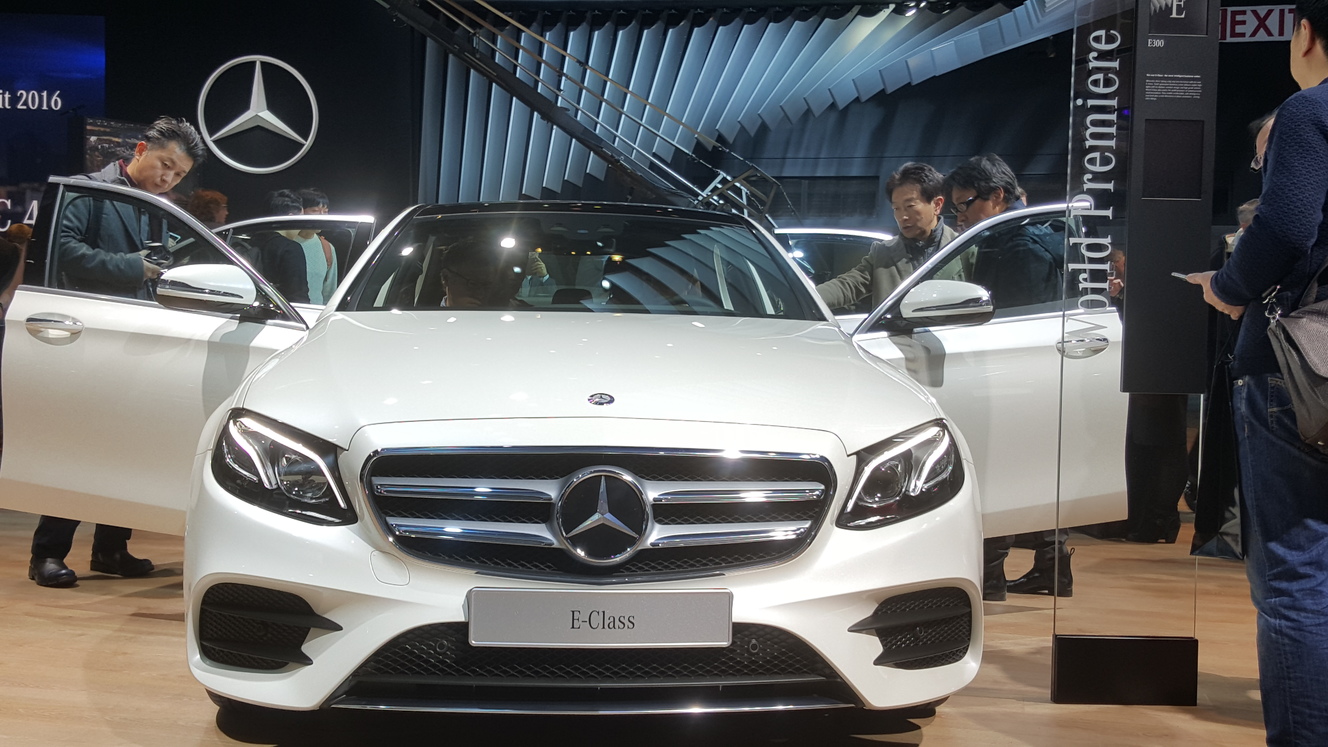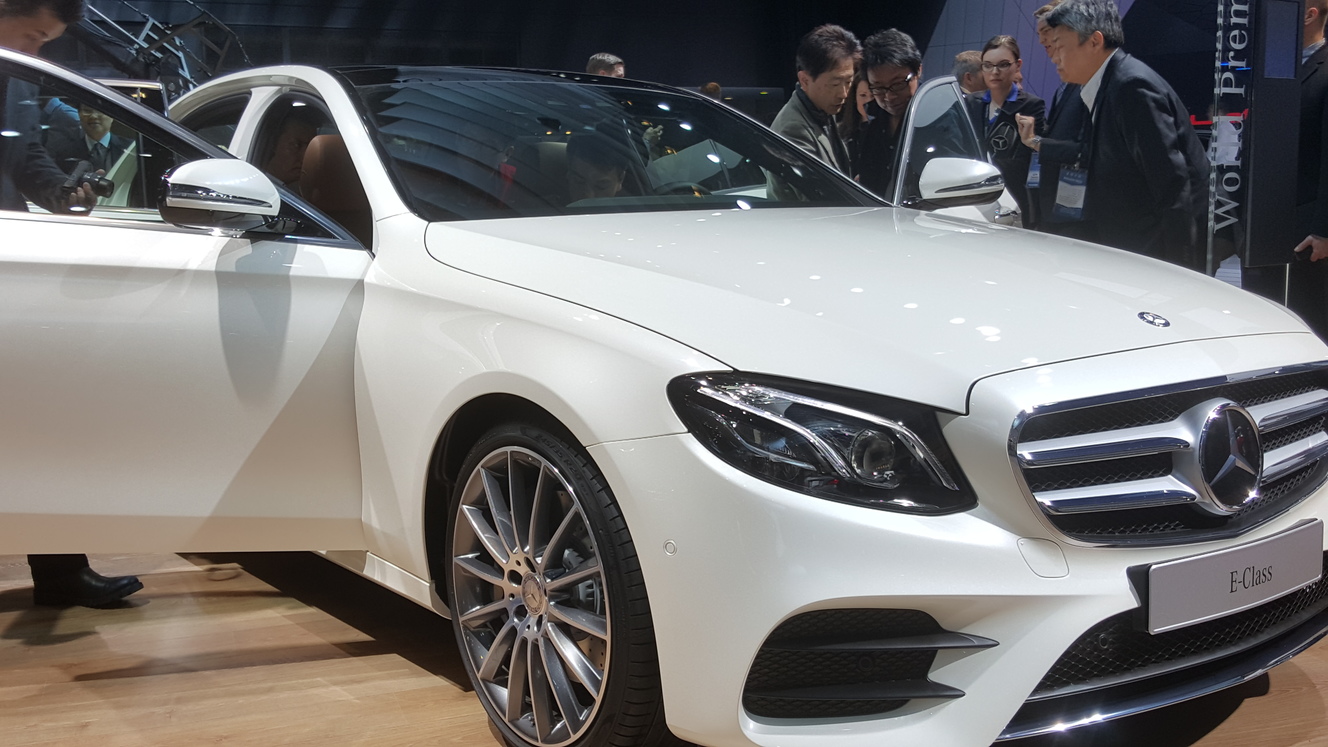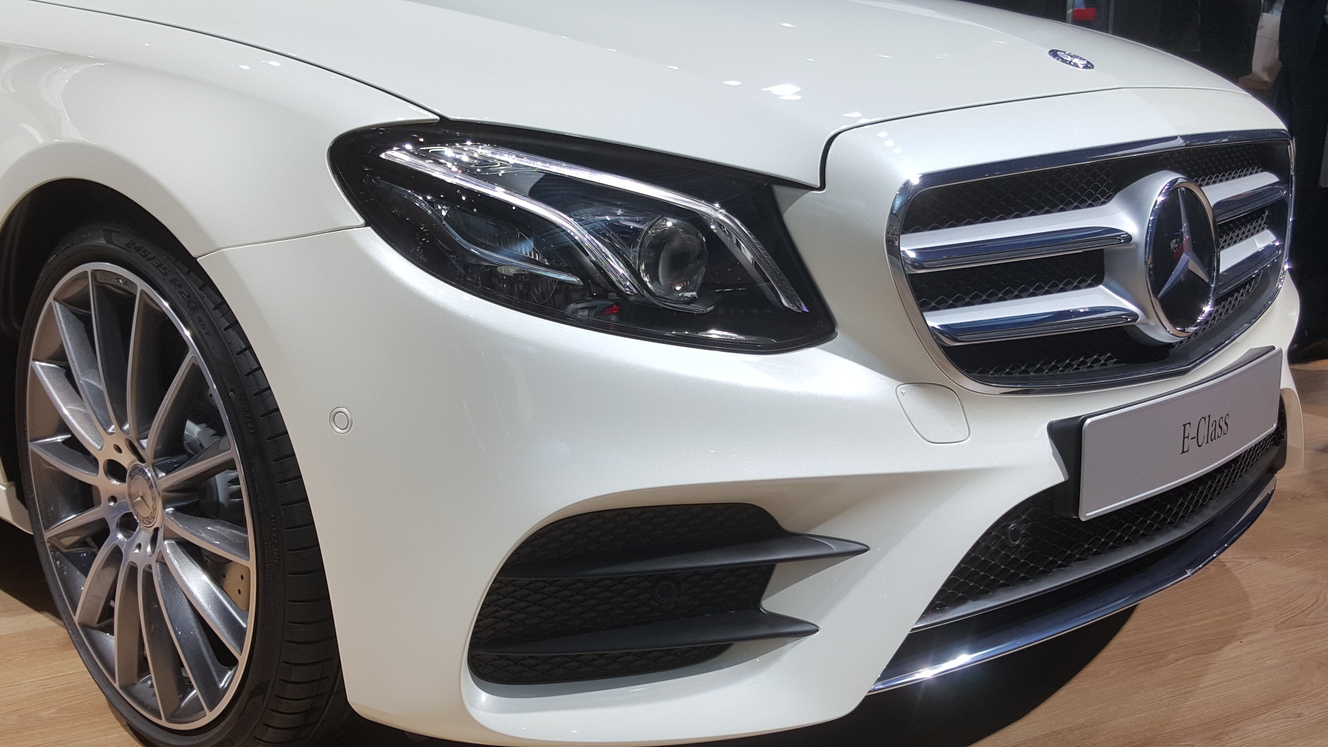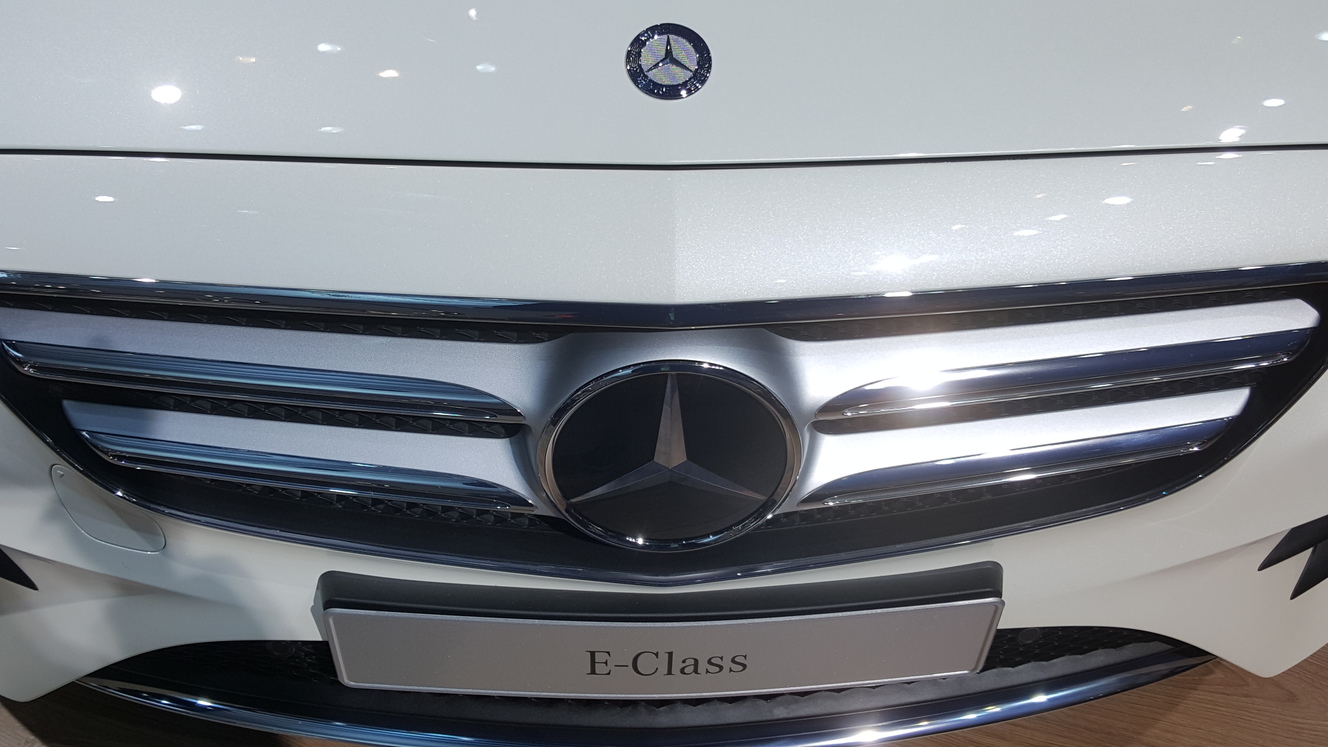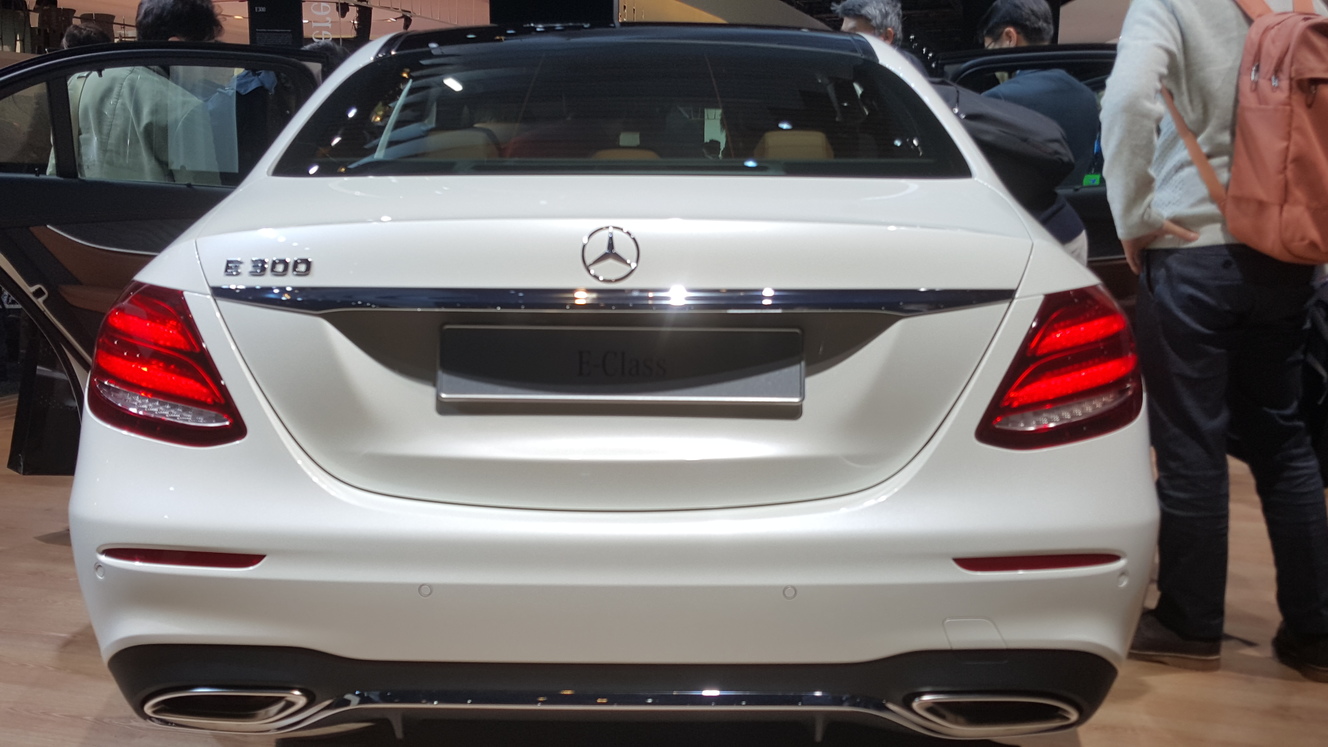Mercedes-Benz has introduced the all-new 2017 E-Class ahead of its official debut at the Detroit Motor Show.
As expected, the next E-Class’ front end falls in line with Mercedes’ current design language thanks to familiar styling cues such as elongated headlights and an upright grille. Buyers can choose whether they want a more elegant-looking car with three slats and a small Mercedes emblem that sticks up from the hood, or a sportier-looking sedan with two slats, mesh inserts, and a much bigger three-pointed star.
Beyond the front fascia, Mercedes’ newest sedan boasts a long hood — a styling cue that has defined the E-Class and its predecessors for decades — and muscular haunches, but it gains a more coupe-like silhouette than the outgoing model. The tail lamps are inspired by the ones found on the C- and the S-Class, and they can be ordered with an eye-catching effect that Mercedes calls “stardust” at an extra cost.
Called W213 internally, the E rides on Mercedes’ modular rear architecture (MRA), a state-of-the-art platform made with lightweight materials including aluminum, that will underpin at least 10 new models before the end of the decade. The new E is consequently expected to weigh less than the outgoing model even though it’s nearly two inches longer.
In the lap of luxury
The E’s cabin is more luxurious than ever, and it places a huge emphasis on technology. Analog gauges mounted behind a glass panel come standard, but the setup can be replaced by a high-resolution color screen that can be configured to show a wide range of information about the car and its surroundings. A 12.3-inch screen mounted next to the instrument cluster groups the E’s navigation, connectivity, and entertainment functions into a single unit controlled via either voice commands or a controller knob located on the center console. Alternatively, the E is offered with smartphone-like touch-sensitive surfaces built into the spokes of the steering wheel. This industry-first feature makes driving safer because the driver can navigate the infotainment system without taking his or her hands off the wheel.
The E-Class can brake and accelerate autonomously at speeds of up to 130 mph, both on the highway and on back roads. The driver simply has to steer the car, though Mercedes’ steering assist technology helps keep the car in its lane. The system is already offered on a host of cars with the three-pointed star on the hood including the smaller C-Class, but Mercedes has improved it for the next-gen E by “teaching” it how to turn the steering wheel even in areas where the lane markings are unclear or missing entirely. The E-Class can help the driver change lanes too, though the process isn’t entirely autonomous yet.
The third way to drive the E-Class is with a smartphone. The sedan can be maneuvered in and out of tight parking spaces using a purpose-designed application. This features allows the sedan to fit snugly in even the tightest parking spaces.
Under the hood
At launch, the U.S.-spec 2017 E-Class will be offered with a turbocharged 2.0-liter, four-cylinder engine tuned to deliver 241 horsepower and 273 pound-feet of torque. The four-banger will shift through a nine-speed automatic transmission, but performance and fuel economy figures haven’t been published yet. Conventional springs will come standard, and a multi-chamber air suspension with a self-leveling function and four modes will be offered at an extra cost.
Additional engine options will be added a little later in the production run. Notably, the 2017 E-Class will inaugurate a brand new family of straight-six engines set to gradually replace the V6 that powers the current E, as well as numerous other members of the Mercedes lineup. Buyers in Europe will also have access to frugal four-cylinder mills, and Mercedes has confirmed the w213 will become the first-ever regular-production E-Class with a plug-in hybrid drivetrain.
At the top of the E-Class hierarchy, Mercedes-AMG’s M5-punching E63 will likely be powered by a downsized, twin-turbocharged 4.0-liter V8 engine tuned to send at least 600 horsepower to all four wheels via an automatic transmission. Finally, a mid-level AMG Sport model will bridge the gap between the regular E and the fire-breathing AMG model.
The new E-Class upholds Mercedes’ reputation for building safe cars. It inaugurates a state-of-the-art feature called Pre-Safe Sound that emits a short interference signal through the sound system if it detects that a collision is imminent. The car maker explains the signal protects the occupants’ ears from the loud noises associated with accidents by triggering a natural reflex called stapedius reflex. Also new on the E is Pre-Safe Impulse Side, which automatically moves the driver or front passenger up to 2.7 inches away from the side of the car if it senses that a lateral collision is imminent. It does this by inflating an air chamber integrated into the front seatbacks.
After greeting the show-going public in the nation’s Motor City, the all-new Mercedes-Benz E-Class will land in Mercedes showrooms next summer in time for the 2017 model year. Coupe, convertible, and station wagon models will be introduced shortly after.
